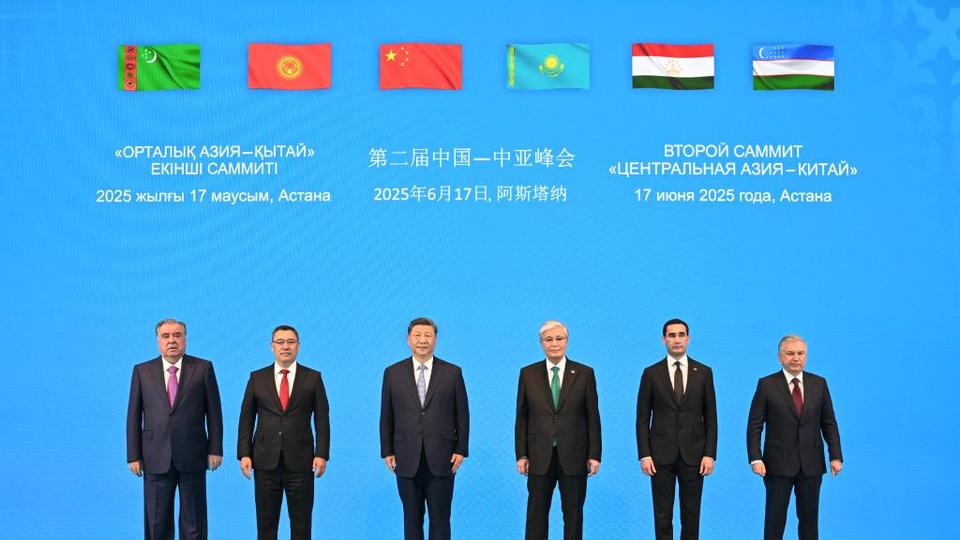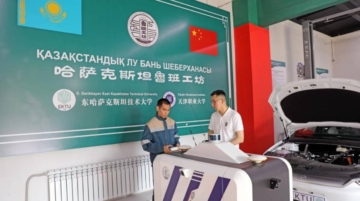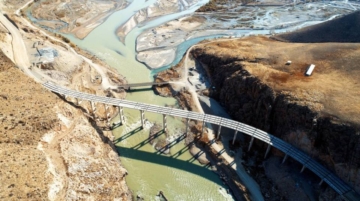
Chinese President Xi Jinping traveled to Astana this week for the second China–Central Asia Summit, meeting with the leaders of Kazakhstan, Kyrgyzstan, Uzbekistan, Tajikistan, and Turkmenistan. At the summit, Xi emphasized China’s “eternal friendship” with the region and rolled out a slate of new initiatives, including cooperation centers focused on poverty reduction and desertification, as well as a trade facilitation platform aimed at boosting ties with small and medium-sized enterprises.
Amid a flurry of diplomatic activity — including Xi’s Southeast Asia tour earlier this year — figuring out what matters and what’s mostly messaging can be tricky. What’s the real significance of Xi’s Central Asia visit, and how does it fit into Beijing’s broader foreign policy strategy?
To unpack these questions, I spoke with Yunis Sharifli, CGSP’s Non-Resident Fellow for Central Asia.
LUCY STEVENSON-YANG: Do you think Xi’s visit to Kazakhstan produced any concrete outcomes, or was it primarily about reaffirming China’s commitment to the region—echoing the themes of stability and criticism of U.S. foreign policy that defined his Southeast Asia tour earlier this year?
YUNIS SHARIFLI: Xi Jinping’s visit to Central Asia carries both similarities and differences compared to his Southeast Asia tour earlier this year. Like in Southeast Asia, this trip was part of China’s broader charm offensive aimed at promoting multilateralism and pushing back against what it sees as unilateral trade measures by the United States. It was also intended to reinforce China’s relationships and promote stability with both its western and southeastern neighbors.
However, there are key differences. Xi’s personal appearance at the summit underscores the region’s growing strategic importance, particularly its untapped markets and critical mineral reserves, at a time when Western countries are also ramping up efforts to secure these resources. The first China–Central Asia Summit in 2023 and now this second summit signal an effort to institutionalize ties and transition from transactional trade to a more stable, long-term partnership.
LUCY STEVENSON-YANG: What were the top priorities on the agenda during Xi’s meetings with the five Central Asian leaders and how did these play out at the summit?
YUNIS SHARIFLI: China’s relationship with Central Asia is steadily evolving from a transactional, export-import dynamic into a comprehensive strategic partnership. In this context, the top items on the agenda reflected both continuity and expansion across key sectors. Energy cooperation — both traditional (oil and gas) and emerging (renewables, hydrogen) — was a key focus, aligning with mutual interests. Another major theme was people-to-people exchange facilitated through media cooperation, educational programs, training courses, and the establishment of cultural centers to build long-term soft power.
Agricultural cooperation also features prominently in the China-Central Asia relationship and was a priority during this summit. Central Asian countries want to move up the value chain by processing and exporting more agri-products, while China is eager to diversify its import sources and reduce vulnerability to external shocks, so the deals from this summit reflect that.
Finally, digital cooperation — particularly in areas like artificial intelligence, e-commerce, and digital infrastructure — was likely high on the list as both sides aim to modernize and integrate their economies further.
LUCY STEVENSON-YANG: What would you say was Xi’s top priority on this trip?
YUNIS SHARIFLI: Given the escalating tension between the U.S. and China, one of Xi Jinping’s top priorities during this trip was to reassure Central Asian countries that China is a stable, long-term, and consistent partner, especially in contrast to the U.S.’s episodic engagement in the region. To demonstrate this commitment, Xi announced a series of practical initiatives, including the establishment of centers for poverty reduction, educational exchange, and desertification prevention, alongside a trade facilitation platform aimed at supporting economic modernization.
The trade platform, in particular, is designed to foster stronger business ties between small and medium-sized enterprises in China and Central Asia. Meanwhile, the social and environmental initiatives are also intended to expand China’s soft power footprint, helping to shape positive perceptions of Beijing at the public level over the long term.
A second priority is ideological and diplomatic positioning. Building on China’s recent charm offensive across the Global South, Xi was likely using this summit to rally support against what he describes as unilateralism, protectionism, and hegemonic practices — an indirect critique of the U.S.-led order. By coupling these themes with tangible cooperation, China aims to strengthen both its regional leadership in Central Asia and its broader influence across the Global South.
Yunis Sharifli is CGSP’s Non-Resident Fellow for Central Asia.




